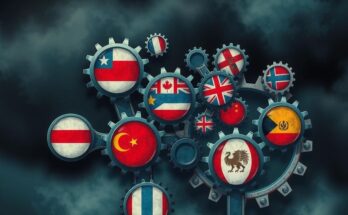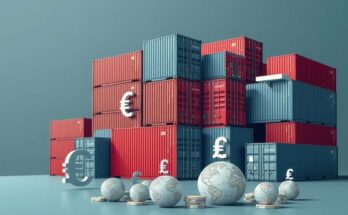In a sudden move, President Trump followed a temporary halt on tariffs against Mexico and Canada with a sweeping 25% tariff on steel and aluminium imports from every nation. While his stated goals, like curbing fentanyl trafficking and fostering prosperity, seem commendable, his underlying intentions, such as addressing the trade deficit or showcasing diplomatic might, are open to scrutiny. One undeniable reality reigns: these tariffs threaten to impede the fragile momentum of America’s economic recovery.
When separated from the political theatrics, one stark economic truth emerges: as competition dwindles and raw material costs rise, prices inevitably climb. This isn’t just theoretical—decades of research from the National Bureau of Economic Research, spanning 151 countries, confirm that heightened tariffs consistently lead to inflation, especially during periods of economic growth. A consensus exists among economists that Trump’s tariffs will escalate costs across the board, with projections suggesting an annual $1000 drop in purchasing power for the average American household.
Increasing inflation isn’t just an abstract worry; it puts pressure on the Federal Reserve to maintain elevated interest rates. Despite optimistic predictions of a soft landing, the spectre of prolonged inflation looms large, with the Chicago Fed’s president cautioning that rising prices could delay necessary rate cuts. This could lead to a surge in debt defaults, as borrowing costs rise painfully, especially for American businesses already precariously balanced with over $2 trillion in debt due within a year.
Some might argue that Trump’s tariffs combat the unfair trade practices of partners like China, notorious for subsidies and intellectual property theft. However, one must question the rationale behind levying a blanket 25% tariff on allies like Canada and Mexico while opting for a softer 10% on the most egregious offenders. How much economic hardship is justified to tackle a trade deficit that has persisted for over fifty years?
Proponents of tariffs often herald them as symbols of American strength and power. Yet, they should remember that the bedrock of U.S. dominance is a thriving economy—one that fuels military and technological advancements essential for national interests. Tariffs jeopardise that growth, prompting supporters to reconsider: is it better to appear strong or to actually possess strength? While Trump posits various policies to rejuvenate American industries, his tariffs could spell doom instead.
President Trump’s recent tariffs on steel and aluminium threaten America’s economic recovery by driving up inflation and lowering household purchasing power. Economists largely agree these tariffs will escalate costs significantly. Rising inflation may compel the Federal Reserve to maintain high interest rates, risking debt defaults among businesses. Despite claims of countering unfair trade practices, the long-term economic implications suggest a detrimental impact on growth and stability.
In conclusion, President Trump’s tariffs pose significant risks to the economic recovery by fostering inflation and increasing the cost of living for American households. The anticipated rise in inflation will potentially lead to higher interest rates, exacerbating debt challenges for businesses. While aimed at correcting perceived trade injustices, these tariffs could inflict unnecessary damage on both the economy and America’s position in the global marketplace.
Original Source: stanfordreview.org



